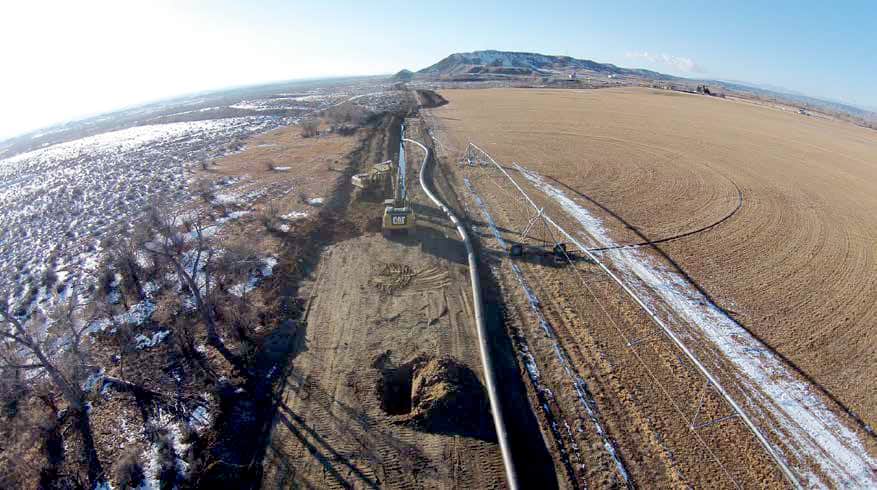Why Duchesne County Chose HDPE Pipe System

The Victory Pipeline was necessary to provide increased capacity for Duchesne County economic and population growth due to the areas increased energy demand. The pipeline project was a gravity fed pipeline installation located in Duchesne County, Utah beginning at Starvation Reservoir. This pipeline was installed using traditional open cut trenching with a few horizontal directional drills at river crossings.
The pipe material selection process highlights HDPE’s performance characteristics and shows that it was the best material for the job. Several different piping materials were considered, but with corrosive soils and high ground water levels, metallic pipes were immediately excluded. It came down to plastic pipe where HDPE won out over PVC largely due to the rough terrain and HDPE’s ability to be fused together in long strings and drug into place. The use of HDPE also eliminated the need for costly fittings and cut down on installation time due to narrower trench widths than those required for other piping materials.
There was a substantial amount of pipe that was: manufactured, shipped, and installed in an extremely short period of time. And various obstacles were encountered in the design and installation of this project which forced several alignment changes throughout the process. There were environmental assessments that were required to be done. Consideration and planning were necessary to account for the endangered plant species and migratory bird population. A large job was obtaining easements from over 50 property owners. And easements for state land, federal land, the Bureau of Indian Affairs were also required. As well as coordination with the US Fish and Wildlife Bureau and the Bureau of Reclamation.
Delivering treated potable water to seven different water companies and cities, the Victory pipeline project involved a large, complex amount of materials and specifications. It included HDPE pipe with sizes ranging from 12-inch to 42-inch diameter. With DR’s ranging from DR7 to DR32.5, including over 30,000 feet of 30” IPS DR13.5 pipe. PSI’s for the project ranged from 10 psi to 300 psi. And with long stretches of open country to cover, runs of 2,000 to 3,000 feet at a time were fused and installed in the trench.
The farming community of Duchesne County realized many successful benefits from the project installation, including no pipe corrosion amid their very corrosive soils. The new pipeline eliminated having pressurized water for fields and pumping costs for customers. The HDPE pipe system reduced the salinity in the water system, while also reducing the salt deposits on the farmer’s fields. The fully fused leak-free HDPE pipe system delivers 30% more water due to no water loss through evaporation or seepage. With the pipeline traveling left, right, up and down, the HDPE pipe system also reduced the project cost, since it needs far fewer fittings. The overall result is a better crop output through a more consistent water delivery system. And of equal importance, the very large amount of decision makers and influencers exposed to all the benefits of HDPE pipe were educated and helped spread the word to prove the many benefits of HDPE Plastic Pipe.